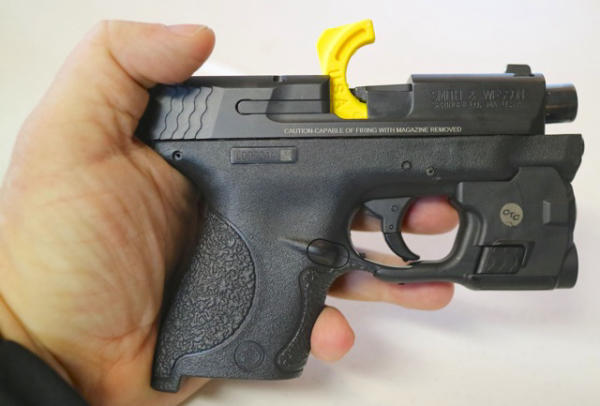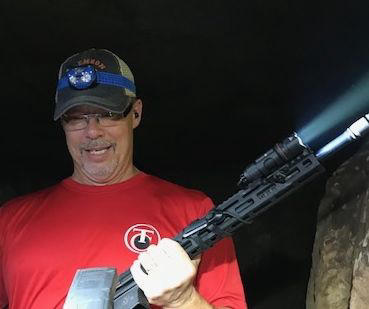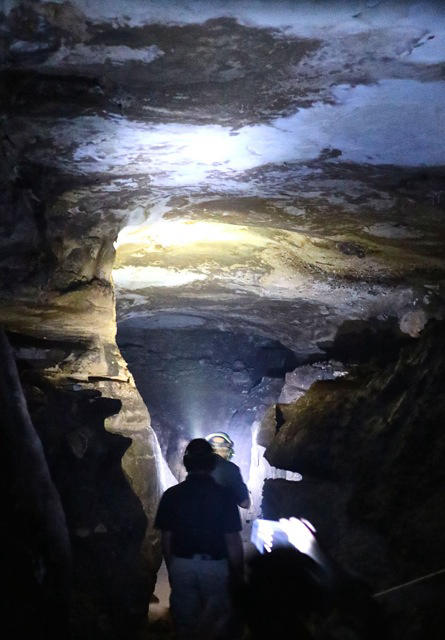For the nearly two decades I’ve been fortunate enough to be in the outdoor business, there are a few companies whose names give you basically all the information you need to have a good idea what their featured products might be.
One of those companies is Oregon’s Crimson Trace. For nearly 25 years, C-T has been the category leader in laser technology. Granted, their laser mix now is about 50/50 red and green today, but the vast majority of “professionals” you’ve seen using lasers in everything from pro shooting competitions to movies like Jurassic World have been using C-T products.
Over the past few years, they’ve also integrated lights into their products. I hesitate to call them integrated flashlights because the idea of encouraging use of a light mounted on a gun as a flashlight concerns me.
Crimson Trace, through their lasers and into their light/laser technologies haven’t manufactured flashlights, they’ve integrated weapon mounted lasers and illumination.
Over the past two days, I’ve been at the Rockcastle Shooting Center a few miles from Bowling Green, Kentucky looking at a few of Crimson Trace’s newest offerings.
When they were shown to the little group of us, there was one comment we all had in common: “where’s the laser?”
Yep, after nearly a quarter century of lasers and light/laser combinations, Crimson Trace is now offering weapon-mounted lights -without lasers.

We tested a pair of their new units, the Model LTG 770, a compact, fitted unit designed for Smith & Wesson’s popular Shield pistol (Crimson Trace is, like S&W an AOB company), and a larger unit the CMR-208 a larger, 420 lumen unit designed for rail equipped rifles, pistols and shotguns.

After the initial surprise, we learned that the new light-only products were the result of requests from existing Crimson Trace customers. And C-T is one of those companies that listens to customers. And the initial result are a pair of lights that have two things in common that are not always the case with other C-T laser or light/laser products: first, the new lights are less expensive that the combo units, and secondly, these new lights are bright.
Mounted on an AR-style rifle, the CMR 208 more than capably illuminated Rockcastle’s unique test-bed for lights and lasers: a cave that’s about 50 feet underground, several hundred feet long and is the absolute definition of pitch black when you don’t bring your own illumination.

While running a basic shooting scenario Rockcastle’s Nick Noble walked us down “the hole” while we used the gun-mounted lights to not only guide us down the narrow passage, but to illuminate targets and make the friend-foe determinations we all pray we don’t one day face for real. It’s trite sounding, but the experience is, well, eye-opening.
You’re already underground in a pitch-black situation. That’s enough to get the heart pumping and the adrenaline on a hair trigger. Once you’re handed a loaded gun, told to move down a narrow passage that is eerily similar to the passages U.S. troops had to go through -for real- during the Battle of Tora Bora, you find your temperature elevating along with your blood pressure. That, in turn, results in near instantaneous condensation on your safety glasses, further reducing your visual acuity (and confidence).
We made two runs each with the rifle and pistol. And to an individual, we found ourselves far more serious in the second runs. Strides shortened, room clearing techniques and use of cover improved, and we even took advantage of natural shooting rests that stabilized longer shots -while providing as much cover as possible from the porous Kentucky limestone.
A few hours in the cave isn’t enough time to thoroughly test these new products, but it was more than enough time to remind each of us that while we consider ourselves to be more familiar with our gear than most, there’s simply no substitute for the kind of simulation and live-fire practice that’s not possible in many places. You’re not likely to find an indoor range willing to turn their lights out and allow you to roam up and down the firing points, and traipsing around at night at your local range probably is frowned on by the neighbors- if it isn’t forbidden by regulation.
But it’s enough time to remind each of us that we need to take advantage of opportunities like these because it reminds us to pass on experiences that might help each of our readers get better, too.
It’s what we’re supposed to be doing as part of our ongoing promise: we’ll keep you posted.
--Jim Shepherd
Editor’s Note: Learn more about Rockcastle Shooting Center and their facilities at: www.rockcastleshootingcenter.com.)